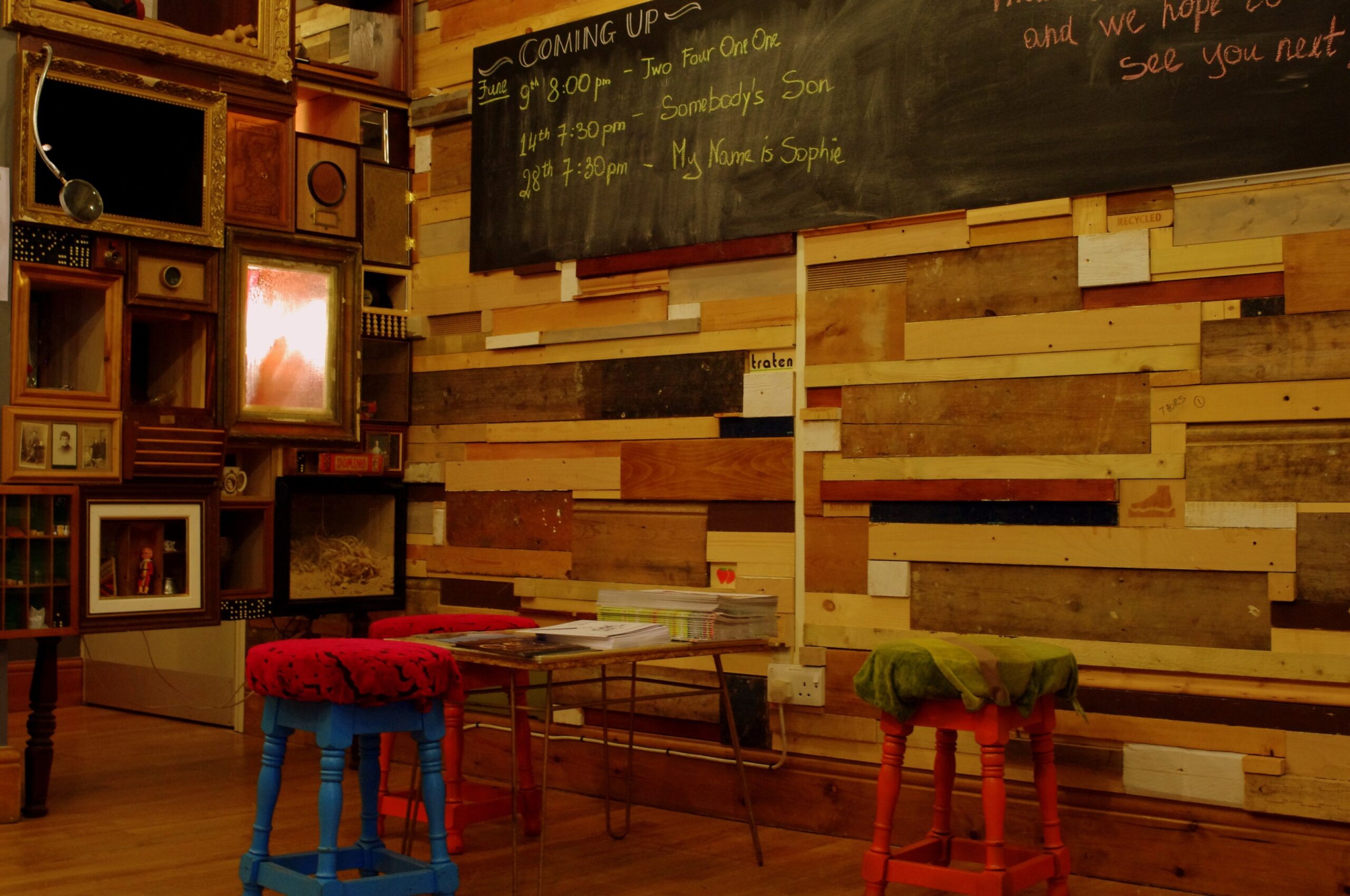
Photo: David Holmes
Breathing the same air
The University of Bradford may be a technology university with no arts department, but it still saw the need for a theatre on its campus. Javaad Alipoor explains why.
It was probably only under the Wilson administration, with the shift in arts funding and the big push to move Britain’s industries on to a more technologically advanced footing that Theatre in the Mill could be born.
As a technology university that has never had a drama or dance department, the University of Bradford seems like a weird old place to host one of the country’s first professional practice venues. But when the university was formed, the incoming senior management appointed fellowships in theatre and music, believing that engaging with art and culture was an intrinsic part of any education, technical or otherwise.
The relationship between technical and technological education on the one hand, and art on the other, is one that has survived and got stronger through all these years
We’ve been celebrating the university’s fiftieth anniversary this year. While that belief might sound a bit like an outdated educational humanism, the relationship between technical and technological education on the one hand, and art on the other, is one that has survived and got stronger through all these years.
Technology and art
The past 50 years have taught us how important this artistic space for reflection is within a technological university, and how important access to cutting-edge technical thinking is for art.
Both technology and art are socially engaged practices, whether we like it or not. In fact, from the internet and data revolution pioneers, to the surrealists and situationists, it’s clear that technology and art both have a pre-figurative quality. Truly contemporary work in either field seems to carry a sort of retroactive sediment of what is to come in the future.
One example of this is the iterative process of theatre making that we have pioneered at Theatre in the Mill. We show work that’s unfinished, often over a number of iterations, specifically looking for shows that artists wouldn’t have the space or confidence to make at traditional venues, and allowing the space to fail and succeed at the artist’s own pace. We are lucky enough to be able to focus on making fruitful and rich conversations as our aim – collective thinking rather than product.
This is the same model that has come to dominate in bleeding-edge computer programming, where the iterative method and the permission to fail are as important and valued as they are in theatre. It’s also this that allows us to make work that is often quite politically and socially provocative. There is a safety that comes from knowing that a provocation was born through the rigour of a two-way dialogue between artist and audience, or the communities the work is about, rather than a speaker saying what they want while the subject remains silent.
Inspiration and engagement
For the rest of the university, Theatre in the Mill provides a space in which their work and their concerns can breathe, in a way that inspires new and fresh moments of inspiration and engagement. Building on the tradition of the fellowships, we have created a space for artists, students, staff and the communities that surround us to come together, to share, to learn and to explore.
Like the university itself, Theatre in the Mill sits within one of the most deprived local authority wards in Western Europe. My company Northern Lines, an associate company of Theatre in the Mill, has spent a lot of time working in deprived parts of the city. In a way, our work on issues like race, Islam and so-called extremism, or the deindustrialisation of a great northern city like Bradford, has been shaped by and helped to shape the conversation around these issues that has taken place nationally.
Over the past three or four years we have sought to commission and programme work that has sat at the intersection of technical and theatrical innovation. The university has some of the foremost scholars working in the field of information technology, as well as a newly developing nano-medical technology institute.
We’ve been able to team up some of the leading academics from these fields and beyond with contemporary artists. In the past few years we’ve curated collaborations between artists and academics, including:
- Chris Goode and Josie Fraser (Dean of the School of Life Sciences) looking at contemporary neurology for ‘GodHead’;
- Invisible Flock and Jennie Pearce (a distinguished Latin Americanist) on their ‘Control’ project; and
- Ellie Harrison and Allan Kellehear (professor of End of Life Care) to contextualise Ellie’s thinking about her ‘Grief’ series of works.
Asking the same questions
To mint a cliché, the future holds as many challenges for us as it does opportunities, and it’s sometimes hard to tell the difference, which is probably a good thing. This year we have done a lot of thinking and analysis of what that future might hold, and looking back through our body of work, we see plenty to be proud of. Fundamentally, our experience is this: academia and art may seem to talk at cross-purposes but we ask the same questions and breathe the same air.
Javaad Alipoor is Director of Northern Lines and Associate Director of Theatre in the Mill.
www.brad.ac.uk/theatre
Join the Discussion
You must be logged in to post a comment.